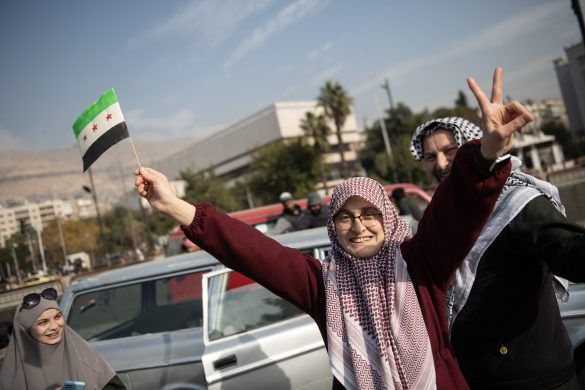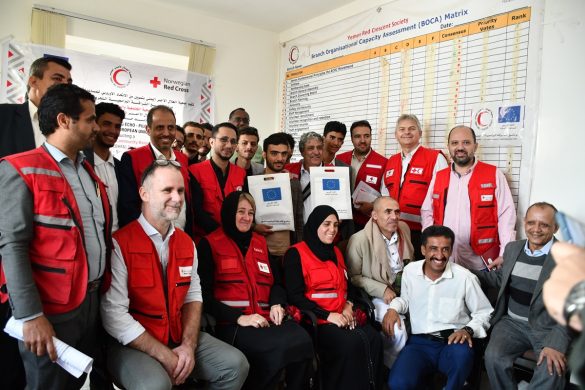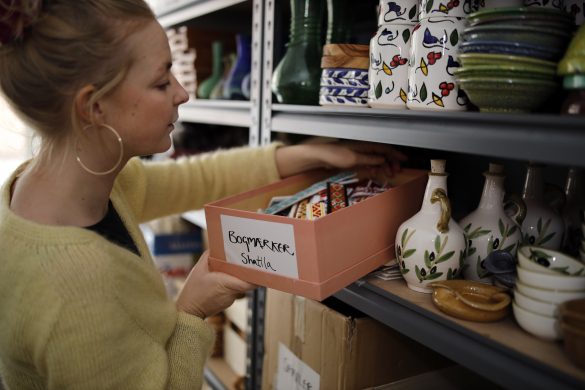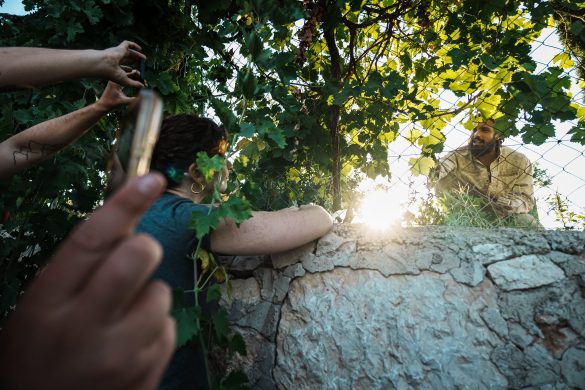Alt for ofte er det tunesiske fiskere, der må redde bådfulde af flygtninge, som driver rundt på havet ud for Tunesien, efter de er sat i en overfyldt båd med dårlige motorer og for lidt benzin. Nye bølger af flygtninge forventes at komme fra Libyen inden for nær fremtid.
TUNIS, 14 October 2014 (IRIN) – In Zarzis, a small port city of some 70,000 in southeastern Tunisia, fishermen plying the Mediterranean have become inadvertent saviours, rescuing boatloads of illegal migrants to Europe setting out from the shores of Libya.
Ahmed is one of them. He squints in the bright light as fishing boats with names scrawled in Arabic across their sterns bob gently around him. He sits on a pile of nets, his broad woven mdhalla hat angled back on his head, while in the distance, large cargo ships sit docked in a nearby commercial port.
On their two to three day fishing trips Ahmed and his colleagues often come across boats full of migrants who have been set adrift by smugglers in boats with little fuel or whose motors break down.
“With no government left in Libya, there’s plenty of harraga [burners],” he said, using the local word for illegal migrants.
Too often, he said, fishing trips have to be cut short to drag the harraga to shore.
“In the near future we’re going to see harraga coming out of Libya in huge numbers,” he said, asking that his real name not be used.
“Why? Because of the deteriorating situation we see there now.”
Weak coastguard
As Libya’s civil strife has intensified, the country’s 1,770km coastline has become the most popular site for smugglers to cram migrants from across the world onto boats with the promise of making it to Europe.
Dunnapar Fern Tilakamonkul, an officer with the UN Refugee Agency (UNHCR) in Libya, said that according to the UNHCR’s most recent estimate, 165,000 people have made the crossing so far this year – almost triple the 60,000 who crossed in 2013.
Of them, the vast majority are believed to have departed from Libyan shores, with the country’s weak coastguard largely powerless to stop them.
Yet many do not make it as far as Europe. Huge numbers end up capsizing and drowning, whether by accident or in some cases through deliberate attacks, while others still are left to float aimlessly in the Mediterranean.
Some of the lucky ones float into Tunisian waters, where they are sometimes rescued by fishermen like Ahmed.
“Before 2011 we used to save the [migrants], bring them into the port, and let them go on their way without telling the authorities,” Ahmed said, with an air of nostalgia.
“In the past couple of years, though, security has tightened. Now all those we find at sea we have to report to the coastguard.”
UNHCR noted in a statement earlier this month that, “90,000 people crossed to Europe between 1 July and 30 September, and at least 2,200 lost their lives, compared to 75,000 people and 800 deaths for the period between 1 January and 30 June.”
Wave of migrants will continue
For Mongi Slim, head of the Tunisian Red Crescent’s regional operations in southern Tunisia, the smuggling business of migrants and asylum seekers out of Libya is a big part of the problem.
“There are smugglers in Libya who say, ‘We’ll take you for 1,500 Libyan dinars [US$1,230].’ They put the migrants on boats with up to 150 people, point north and say, ‘It’s that way to Lampedusa.’”
He added that the wave of migrants is likely to continue unabated until the end of October, when good sailing weather falls off.
When the migrants are brought into Zarzis, Slim said, the Red Crescent receives them, offering food and water. For those who decline to be voluntarily repatriated by the International Organization for Migration (IOM), the next step is housing.
Red Crescent Tunisia operates two dormitories in the city of Medenine, just inland from Zarzis.
Culture clash
Yet in a turn that has brought more distress to the exhausted migrants coming ashore, Slim noted that conservative locals in Medenine have come into conflict with sub-Saharan African migrants because of behaviour they view as disrespectful.
“This happened [in early August] when we brought in 240 migrants who were mostly Nigerian. The locals were upset about migrant women who wore revealing clothes, and who walked the streets unaccompanied. Locals said they were prostitutes.”
As for what becomes of the migrants housed in the Red Crescent shelters, Slim said that migrants in Medenine rarely stay more than three months.
Often, he said, “they adapt to the country and find work in construction or agriculture,” two areas of the regional economy in perennially high demand of labour.
Citing the group of 240 largely Nigerian migrants rescued in August, he said half had voluntarily returned to Nigeria with the help of IOM.
However, he claims that the other half slipped back across the border into Libya, where they will likely try again to cross to Europe from the port of Zuwara, only 60km from the Tunisian border.
Millions of undocumented migrant workers
For years Libya has attracted hundreds of thousands of sub-Saharan, Asian and Egyptian migrant workers and refugees, attracted by opportunities created by oil wealth and, in many cases, the vast unpatrolled borders that Libya shares with six countries.
Gerry Simpson of Human Rights Watch in Geneva, said the organization spoke with the Libyan Ministry of Labour, which noted in April 2014 that about 170,000 mostly Bangladeshi, Egyptian, Pakistani, and Sudanese nationals were given work permits in 2013.
The Ministry pointed out, however, that it believes there are an estimated two to three million undocumented migrant workers in Libya.
Italiy and Malta argue over responsibility
In October 2013 after more than 400 refugees perished in two accidents just off of the Italian coast, the European Union established the Mare Nostrum initiative.
Administered by the Italian navy, Mare Nostrum coordinates search and rescue of migrants and refugees at sea, and has saved over 92,000 people at its most recent count.
Yet, the Italian authorities plan to phase out the programme soon, citing costs and claiming that it only serves to encourage smugglers, while rights groups say many lives will be lost if Mare Nostrum is discontinued before the EU can fill the gap.
Nicanor Haon, a former officer in the migrants’ rights department at the Tunisian Forum for Economic and Social Rights, claims that not enough is being done on the part of international actors to save desperate migrants stranded off the North African coast.
Due to a lack of coordination between governments over who is in charge of rescuing migrants, he said, lives are lost.
“Sometimes people call the Italian coastguard for help, but Italy and Malta then argue over who’s responsible. In the meantime, people die.”
Prosecution risk
Further, Haon said fishermen like those in Zarzis also face the risk of prosecution for helping migrants at sea.
“Depending on which international borders [the fishermen] cross,” he said, “they may be accused of smuggling.”
While rights groups criticize the international community for not doing enough to save the lives of harraga, the fishermen of Zarzis continue to try to take up the slack.
While Ahmed says fewer harraga have been brought into Zarzis in recent weeks, he claims this is due to inclement sailing weather, and fishermen staying in to celebrate the Muslim holiday of Eid.
Yet, with rising instability and violence in Libya, his forecast is dark.
“We will see harraga coming in each day,” adding “but we can’t leave people out there in an overflowing boat to die, because we’re Muslims.”














